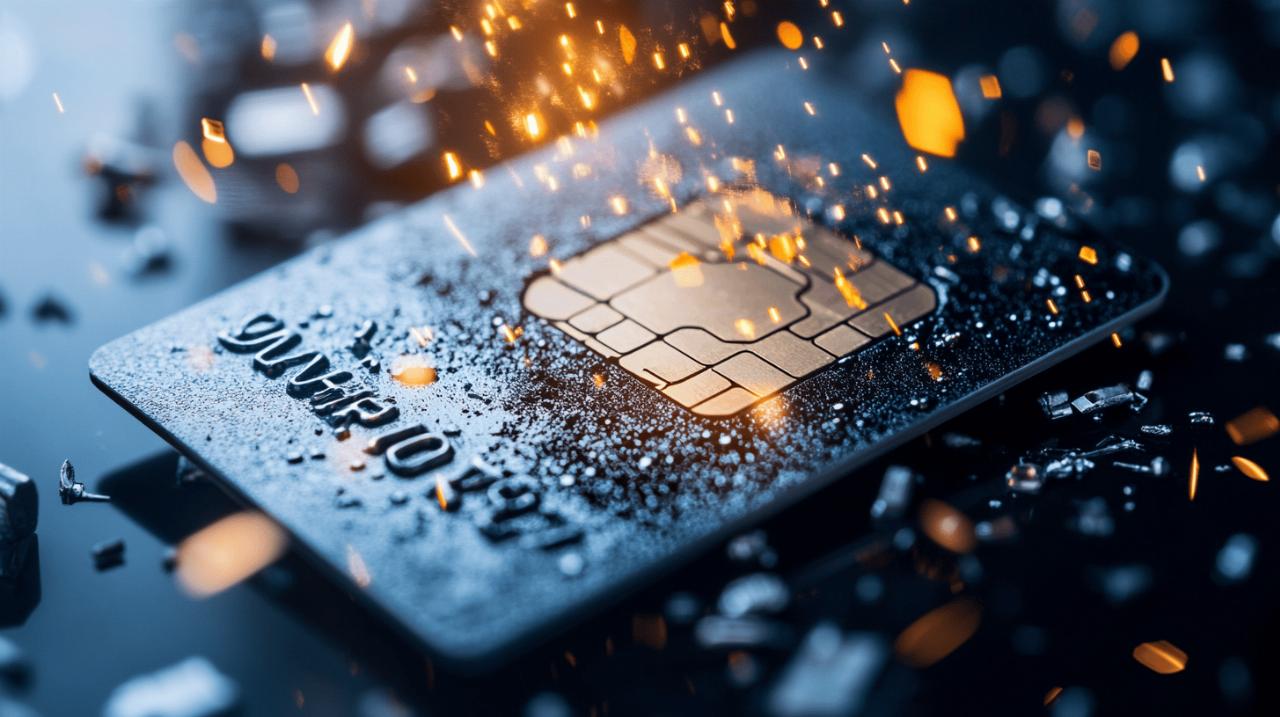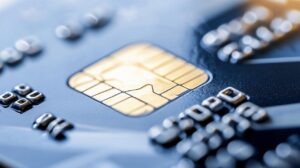In our increasingly digital world, bank cards remain an essential part of our daily lives. Whether you're shopping locally or travelling abroad, magnetic stripe credit cards continue to be widely used despite advances in contactless technology. However, many cardholders have experienced the frustration of having their cards suddenly stop working, especially after passing through airport security. This comprehensive guide explores why this happens and how you can protect your valuable payment cards during your travels.
Understanding magnetic stripe technology
To appreciate why credit cards can become demagnetised, it's important to understand the technology that makes them work. Most bank cards contain a magnetic stripe that stores your payment information and allows transactions to be processed when you swipe your card at a terminal. This seemingly simple black strip on the back of your card is actually a sophisticated piece of technology that bridges the physical and digital worlds of finance.
How bank cards store your data
The magnetic stripe on your credit card contains tiny magnetic particles that hold your financial information in a format that can be read by card readers. When you swipe your card, the reader detects these magnetic patterns and translates them into the data needed to process your payment. This includes your card number, expiration date, and other security information required for authentication methods during transactions. The technology has been reliable for decades, but it's also vulnerable to disruption from certain environmental factors.
The science behind magnetic stripes
Magnetic stripes work on principles similar to those used in traditional cassette tapes or older computer storage media. The stripe contains iron-based magnetic particles that can be polarised in different patterns to represent data. These patterns create a unique magnetic field that card readers can interpret. However, this same property that makes magnetic stripes functional also makes them susceptible to damage from other magnetic fields. When exposed to stronger magnetic forces, the carefully arranged patterns on your card can become scrambled, rendering the card unreadable by payment terminals.
Common causes of card demagnetisation
Understanding what causes demagnetisation can help you better protect your bank cards. While magnetic stripe technology is remarkably durable, several everyday items and situations can interfere with their functionality. Awareness of these risks is the first step toward preventing card failures, especially when travelling through airports where security equipment is prevalent.
Everyday items that pose risks to your cards
Several common items in your home or office can potentially demagnetise your credit cards. Mobile phones are perhaps the most frequent culprits, as they contain magnets for speakers and other components that can interfere with your card's magnetic stripe if kept in close proximity for extended periods. Other household items like decorative magnets, magnetic clasps on handbags, and even some security tags on clothing can pose similar risks. Electronic devices with speakers or motors generate magnetic fields that may gradually weaken the data stored on your cards. Even placing multiple cards together in your wallet can cause them to demagnetise each other over time due to friction and their competing magnetic fields.
Airport security equipment and your credit cards
Airport security systems present particular concerns for travellers carrying magnetic stripe cards. While modern airport scanners are designed to minimise interference with electronic devices, the powerful magnets used in some older X-ray machines and metal detectors can potentially affect your card's magnetic stripe. Security wands used for personal screening also generate magnetic fields that could impact your cards. The risk is generally low with current technology, but it's still advisable to take precautions when passing through security checkpoints. Contrary to popular belief, it's not usually the X-ray machines themselves that pose the greatest risk, but rather the magnetic fields generated by the motors and components of the conveyor belts and associated equipment.
Practical tips for card protection
Protecting your payment cards from demagnetisation doesn't require expensive equipment or complicated procedures. Simple habits and affordable protective products can significantly reduce the risk of card failure, especially when travelling through airports or using your cards in unfamiliar environments.
Proper storage techniques for bank cards
How you store your credit cards can make a significant difference in maintaining their functionality. Keep your cards in a dedicated section of your wallet, preferably separated from each other to prevent friction and magnetic interference. Avoid storing cards near electronic devices like smartphones or tablets. When going through airport security, consider removing your cards from your wallet and holding them in your hand rather than placing them directly on the conveyor belt. Always keep your cards dry and clean, as physical damage to the magnetic stripe can also cause reading problems. Regularly check your cards for signs of wear or scratches across the magnetic stripe, which might indicate potential issues.
Protective sleeves and wallets for magnetic cards
Consider investing in specialised protective products designed to shield your cards from magnetic interference. RFID-blocking wallets and card sleeves provide protection not only from demagnetisation but also from unauthorised scanning of contactless cards. These protective cases incorporate materials that block electromagnetic fields, creating a safe environment for your sensitive payment cards. While these products were initially developed to prevent RFID interference with newer contactless cards, many also provide effective shielding for traditional magnetic stripes. For frequent travellers, dedicated travel card holders with extra shielding can offer peace of mind when passing through multiple security checkpoints.
What to do when your card gets demagnetised
Despite taking precautions, you may still encounter situations where your card becomes demagnetised. Being prepared for this possibility can help you avoid significant disruptions to your travel plans or daily activities, especially when you're far from home.
Emergency payment options whilst travelling
If you discover your credit card has been demagnetised while travelling, several alternatives can help you manage until you obtain a replacement. Always travel with multiple payment methods, including at least one backup card stored separately from your primary card. Mobile payment options like Apple Pay or Google Pay can serve as excellent backups if your physical card fails, as they don't rely on magnetic stripes. Many modern cards feature both magnetic stripes and chips, so even if the stripe is damaged, chip-and-PIN transactions might still work. Additionally, contactless payments using NFC technology are increasingly available worldwide and aren't affected by magnetic stripe issues.
Getting a replacement card from your bank
When your card is demagnetised, contacting your bank promptly is essential. Most financial institutions have procedures in place for expedited card replacement, especially for customers travelling abroad. Before your trip, save your bank's international contact number where you can access it without needing your card. Some banks offer emergency card delivery services to international destinations, though this typically incurs additional fees. Alternatively, many banks can provide temporary digital card details for online transactions until your physical replacement arrives. Remember that reporting a demagnetised card is different from reporting a lost or stolen card, so be clear with customer service about your situation to avoid unnecessary cancellation of your account.
The Rise of Contactless and Mobile Payment Solutions
Modern banking has evolved tremendously with technology, especially when it comes to protecting your bank cards from common issues like demagnetisation. While traditional magnetic stripe cards remain vulnerable to magnetic fields at airport scanners and other security systems, newer technologies are making this problem increasingly obsolete. Card providers now offer more robust solutions that help maintain your payment options even when a card becomes demagnetised.
How NFC technology is revolutionising card payments
Near Field Communication (NFC) technology has transformed the card payment landscape across the UK and globally. Unlike magnetic stripe cards, contactless cards use radio frequency identification (RFID) and are significantly more resistant to demagnetisation. These cards don't rely on the magnetic strip for transactions, making them less vulnerable to magnetic fields from airport scanners, smartphones, and other electronic devices.
Many banks now issue contactless cards as standard, providing enhanced security through chip-and-PIN authentication methods while offering the convenience of tap-to-pay functionality. This shift toward NFC technology represents a substantial improvement in card maintenance requirements and protects users from the frustration of unexpectedly demagnetised credit cards during travel or daily use.
Using digital wallets as backup for demagnetised cards
Digital wallets have emerged as an excellent backup solution for those moments when your physical bank card becomes demagnetised or damaged. Mobile access to your payment methods through platforms linked to your bank accounts ensures you're never without a payment option. This cloud access control of your finances means you can make contactless payments even if your physical credit card fails.
Digital security measures built into mobile payment systems often exceed those of physical cards, with multiple authentication methods required before completing transactions. For travellers concerned about card demagnetisation at airport security systems, storing card details in a secure digital wallet provides peace of mind. Many banks also offer immediate digital card access when requesting a replacement for a damaged or demagnetised card, minimising disruption to your financial access whilst maintaining proper access management of your accounts.




